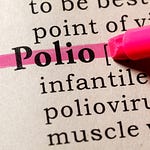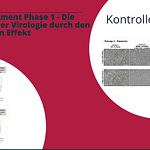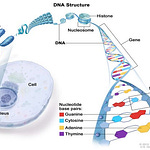This podcast is based on the article by Tam titled: PCR and Real Time RT-PCR under critical review.
Presentation notes:
The article presents an interesting critical analysis of PCR and real-time RT-PCR, raising important questions about the methodology, assumptions, and interpretations within these techniques. The author’s findings, particularly regarding the lack of microscopic observation during the processes and the reliance on chemical treatments, are intriguing and warrant further investigation.
Here are some points from the author’s analysis that could be highlighted for further research:
The DNA isolation process, which the author describes as a “chemical wash of dead tissue” rather than true isolation, raises questions about the nature of the extracted material. The author questions whether the extracted material is truly DNA, given that it is rarely, if ever, observed under a microscope.
The reliance on mathematical models and x-ray images to determine the structure of DNA, rather than direct observation, is another area the author highlights as a weakness. The author also notes the lack of documented evidence for the processes of DNA replication, transcription, and translation3.
The role of DNA polymerase is questioned5. The author points out that there is a lack of direct observation of the enzyme in action and a lack of control experiments to establish the effects of individual components in the PCR cocktail.
The synthesis of artificial nucleotides (dNTPs) and primers, and their exclusive availability from biotech corporations, is presented as a potential area of concern6. The author raises the question of whether these components are validated and whether their composition is as specified.
The temperature cycling in PCR, with rapid changes between denaturation, annealing, and elongation, is presented as an area of concern. The author questions whether the temperatures can be reached fast enough and whether the chemical cocktail can withstand the changes.
The author questions the lack of microscopic observation at each step of the PCR cycle. The process is based on assumptions that, for example, DNA splits into two strands at 95°C and primers attach at 60°C7.
The Real-time RT-PCR method is also questioned, especially regarding the initial design of the Sars-Cov-2 test. The author highlights that the primers and probes were designed based on a computer-generated genome, rather than a physically isolated virus.
The lack of disclosure of cycle numbers in RT-PCR is another point raised as an area of concern.
The author's observation that the amount of chemicals and one-use plastic used in PCR and RT-PCR is quite substantial and potentially polluting is another important point that should be taken into consideration.
It is essential to acknowledge the points made by the author regarding the chemical nature of PCR and RT-PCR. The author emphasizes the need to explore whether these techniques are measuring what they are purported to measure. It is important to investigate the claims that DNA polymerase synthesizes DNA and that primers and probes attach to specific sequences in the described manner. The author’s analogy comparing the PCR process to heating up a meal in a microwave or mixing Lego pieces with a chemical cocktail further emphasizes the need to reevaluate the process.
Overall, the author’s critical approach and detailed analysis of PCR and Real time RT-PCR present thought-provoking questions that merit serious investigation.












Share this post